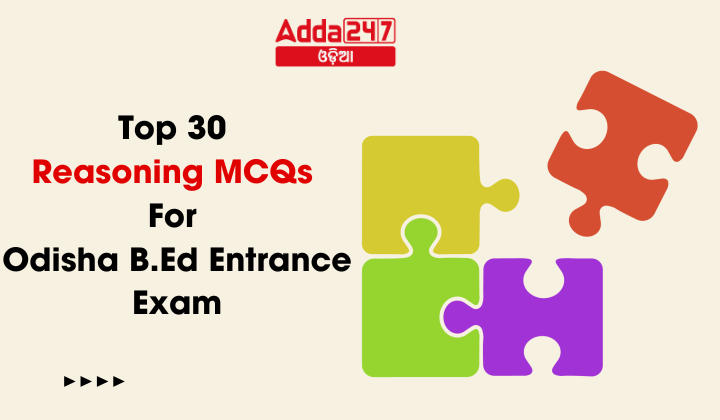Preparing for the Odisha B.Ed entrance exam requires a solid understanding of various reasoning concepts. Here, we have compiled the top 30 multiple-choice questions (MCQs) to help you excel in the reasoning section of the exam. Each question is followed by four options, with the correct answer provided at the end of the article.
Top 30 Reasoning MCQs For Odisha B.Ed Entrance Exam
- What is the next term in the series: 1A2B3C4D5E?
(A) 6F
(B) 6G
(C) 6H
(D) 6I
Ans: (A) 6F.
Sol:- The series seems to be a combination of numbers and letters in an alternating pattern. Each number is followed by a letter corresponding to its position in the English alphabet.
1A, 2B, 3C, 4D, 5E…
Following this pattern, the next term would be 6F. - Which term will come next in the series: AXB, BYC, CZD, DYE,?
(A) EXF
(B) EYF
(C) EZA
(D) EAF
Ans: (A) EXF
Sol:- The pattern in the given series is as follows:
The first letter moves one step forward in the alphabet (A → B → C → D → E).
The second letter moves one step backward in the alphabet (X → Y → Z → Y → X).
The third letter moves one step forward in the alphabet (B → C → D → E → F).
Applying this pattern, the next term in the series would be EXF. - If BD, DG, GK, then the next term is:
(A) KM
(B) KJ
(C) KP
(D) JN
Ans: (C) KP
Sol:- pattern appears to involve moving three letters forward in the alphabet:
B -> D (+2)
D -> G (+3)
G -> K (+4)
Following this pattern, the next letter after K would be P. H
So, following this pattern, the next number would be 5. Converting 5 back to a letter, we get:
K -> P
So, the next term is KP - If 3F, 6K, 9P, then the next term is:
(A) 12U
(B) 12W
(C) 12S
(D) 12T
Ans: (A) 12U
Sol:- In this series, it seems like the numbers represent multiples of 3, and the letters might follow some pattern. Let’s examine:
3F: 3 * 1 = 3, F is the 6th letter in the alphabet.
6K: 3 * 2 = 6, K is the 11th letter in the alphabet.
9P: 3 * 3 = 9, P is the 16th letter in the alphabet.
Following this pattern, the next term would be when the multiple of 3 is 4, which gives 12, and the corresponding letter would be the 21st in the alphabet, which is U. - What is the next term in the series: 2A, 5D, 8G, 11J,?
(A) 13M
(B) 12M
(C) 14M
(D) 14L
Ans: (A) 13M
Sol:- In this series, it looks like the numbers increase by 3 each time, while the letters follow an alphabetical pattern, increasing by three letters each time.
Let’s check:
2A: A is the 1st letter, +3 gives D.
5D: D is the 4th letter, +3 gives G.
8G: G is the 7th letter, and +3 gives J.
11J: J is the 10th letter, +3 should give M.
So, the next term should be 14M. - Ranu said to Manisha, “The girl I met yesterday at the beach was the youngest daughter of my friend’s mother’s brother-in-law.” How is the girl related to Ranu’s friend?
(A) Cousin
(B) Daughter
(C) Friend
(D) Aunt
S1. ANS:- (A) Cousin
Sol:- Let’s restructure the statement to make it clearer:
Ranu said to Manisha, “The girl I met yesterday at the beach was the youngest daughter of my friend’s mother’s brother-in-law.”
Now, let’s break it down:
Ranu’s friend’s mother’s brother-in-law is Ranu’s friend’s uncle.
The youngest daughter of Ranu’s friend’s uncle is Ranu’s friend’s cousin.
So, the girl is related to Ranu’s friend as her cousin. - Anil said, “This girl is the wife of the grandson of my mother.” How is Anil related to the girl?
(A) Brother
(B) Grandfather
(C) Husband
(D) Father-in-law
ANS:- (D) Father-in-law
Sol:- Anil said, “This girl is the wife of the grandson of my mother.”
Let’s break this down:
Anil’s mother’s grandson is Anil’s nephew.
The wife of Anil’s nephew is Anil’s nephew’s wife.
Anil’s nephew’s wife is Anil’s nephew’s daughter-in-law.
So, Anil is related to the girl as her father-in-law, which corresponds to option (D). - If P is the son of Q, Q is the brother of R, and R is the daughter of S, what is the relationship between P and S?
(A) Grandson
(B) Nephew
(C) Uncle
(D) Father
Ans:- (A) Grandson
Sol:- Given the information:
P is the son of Q,
Q is the brother of R,
R is the daughter of S,
We can deduce the following:
P is the Nephew of R
R is the daughter of S, so S is the parent of R.
R and Q are sister and brother So, S is the common parent of both R and Q
Therefore, P and S is grandparent and grandson
So, the relationship between P and S is that P is the grandson of S. - If A is the father of B, B is the sister of C, and C is the daughter of D, what is the relationship between A and D?
(A) Grandfather
(B) Father
(C) Uncle
(D) Husband
Ans:- (D) Husband
Sol:- Given the information:
A is the father of B,
B is the sister of C,
C is the daughter of D,
We can deduce the following:
B and C share the same parent, which is A.
C is the daughter of D, so D is the parent of C.
Therefore, A and D are parents of B and C
So, the relationship between A and D is that they are Husband and wife, and A is the husband of D - If X is the son of Y, Y is the brother of Z, and Z is the daughter of W, what is the relationship between X and W?
(A) Grandson
(B) Aunt
(C) Mother
(D) Granddaughter
Ans:- (A) Grandson
Sol:- Given the information:
X is the son of Y,
Y is the brother of Z,
Z is the daughter of W,
We can deduce the following:
X is the Nephew of Z (since X is the son of Y, and Y is the brother of Z).
Z is the daughter of W, so W is the parent of Z.
Therefore, X is the grandson of W, and W is the grandparent of X.
So, the relationship between X and W is that X is the grandson of W, and W is the grandparent of X. - How many odd days are there in a leap year?
(A) 1
(B) 2
(C) 0
(D) 3
Ans:- (B) 2
Sol:- A leap year has 366 days, which is one day more than a non-leap year (365 days). When we divide 366 by 7, we get 52 weeks with 2 remaining days (366 mod 7 = 2). These remaining 2 days are the odd days in a leap year. - What is the number of odd days in January?
(A) 1
(B) 2
(C) 3
(D) 0
Ans:- (C) 3
Sol:- January has 31 days, which is divisible by 7 with 3 remainder. Therefore, there are 3 odd days in January. - How many days are there in February during a leap year?
(A) 29
(B) 28
(C) 30
(D) 31
Ans:- (A) 29
Sol:- During a leap year, February has 29 days.
A leap year occurs every 4 years, and during a leap year, February gains an extra day, making it 29 days instead of the usual 28 days in a non-leap year. - What is the number of odd days in May?
(A) 1
(B) 2
(C) 3
(D) 0
Ans:- (C) 3
Sol:- To find the number of odd days in May, let’s consider the total number of days in May and then find the remainder when dividing by 7.
May has 31 days. When we divide 31 by 7, we get a remainder of 3.
So, there are 3 odd days in May. - In which month do we always have 30 days?
(A) January
(B) February
(C) March
(D) April
Ans:- (D) April
Sol:- The month in which we always have 30 days in April - How many total consonants are there in the alphabetical series?
(a) Twenty-Four
(b) Twenty-One
(c)Twenty-Three
(d) Twenty-Two
ANS:- (d) Twenty-Two
Sol:- To find the total number of consonants in the English alphabet, we subtract the number of vowels (A, E, I, O, U) from the total number of letters in the alphabet, which is 26.
Total number of letters in the English alphabet = 26
A, B, C, D, E, F, G, H, I, J, K, L, M, N, O, P, Q, R, S, T, U, V, W, X, Y, Z
Total number of vowels (A, E, I, O, U) = 5
Therefore, the total number of consonants = 26 – 5 = 21.
Among the options provided, the closest one to the correct count of 21 is (b) Twenty-One - Identify the missing letter in the series C, F, I, __, O.
a) L
b) M
c) N
d) P
ANS:- a) L
Sol:- In this series, it appears that the letters are increasing by three positions each time. Starting with
C, the next letter is three positions ahead, resulting in F.
Following this pattern, the next letter after F is three positions ahead, resulting in I.
Continuing this pattern, the missing letter after I would be three positions ahead, resulting in L.
So, the correct answer is L - What is the missing letter in the series Q, S, U, __, Y?
a) W
b) V
c) T
d) X
ANS:- a) W
Sol:- In this series, it seems that the letters are increasing by two positions each time.
Starting with
Q, the next letter is two positions ahead, resulting in S.
Following this pattern, the next letter after S is two positions ahead, resulting in U.
Continuing this pattern, the missing letter after U would be two positions ahead, resulting in W.
So, the correct answer is W - What is the missing letter in the series A, D, G, __, and M?
a) J
b) H
c) I
d) K
S4.ANS:- a) J
Sol:- In this series, it seems that the letters are increasing by three positions each time.
Starting with
A, the next letter is three positions ahead, resulting in D.
Following this pattern, the next letter after D is three positions ahead, resulting in G.
Continuing this pattern, the missing letter after G would be three positions ahead, resulting in J.
So, the correct answer is J - If the position of the 1st and the 14th alphabets, the 2nd and the 15th alphabets, and so on up to the 13th and the 26th alphabets, are interchanged, then which alphabet will be 7th to the right of the 10th alphabet from the right end?
(a) A
(b) C
(C) D
(d) B
ANS:- (b) C
Sol:- To solve this problem, let’s first identify the new positions of the alphabet after the interchange:
After the interchange:
The 1st alphabet (A) moves to the 14th position.
The 2nd alphabet (B) moves to the 15th position.
And so on, until:
The 13th alphabet (M) moves to the 26th position.
Now, we are asked to find the alphabet that will be 7th to the right of the 10th alphabet from the right end. This means we need to count 10 alphabets from the right end and then move 7 positions to the right from there.
From the right end:
The 10th alphabet is N (since M moves to the 26th position).
7 positions to the right of N is C.
So, the alphabet that is 7th to the right of the 10th alphabet from the right end is C.
Therefore, the correct option is (b) C - Rohit is standing facing North. He goes 30 meters ahead and turns left and goes for 15 meters. Now he turns right, goes for 50 meters, and finally turns to his right and walks. In which direction is he facing
A) North
B) East
C) South
D) West
ANS:- B) East.
Sol:- Let’s analyze Roshan’s movements:
Roshan starts facing North.
He moves 30 meters ahead (still facing North).
He turns left, which means he is now facing West.
He moves 15 meters.
He turns right, which means he is now facing North again.
He moves 50 meters.
Finally, he turns right again, which means he is now facing East.
So, after all the movements, Roshan is facing East.
Therefore, the correct answer is option B) East. - Which direction is exactly opposite to the north?
(A) East
(B) South
(C) West
(D) Northeast
ANS:- (B) South.
Sol:- The direction exactly opposite to the north is south.
Therefore, the correct answer is option (B) South. - If A walks 5 km towards the east, then turns right and walks 10 km, what is the straight-line distance between A’s starting point and ending point?
(A) 10 km
(B) 12 km
(C) 13 km
(D) 15 km
ANS:- 11.18 km.
Sol:- Let’s visualize A’s movements:
A walks 5 km towards the east.
Turns right (A is now facing south) and walks 10 km.
This forms a right-angled triangle, where one side is 5 km (the initial eastward walk), another side is 10 km (the southward walk), and we need to find the hypotenuse, which is the straight-line distance between A’s starting point and ending point.
Using the Pythagorean theorem, which states that in a right-angled triangle, the square of the length of the hypotenuse (c) is equal to the sum of the squares of the lengths of the other two sides (a and b):
c² = a² + b²
Substituting the given values:
c² = 5² + 10²
c² = 25 + 100
c² = 125
Taking the square root of both sides to solve for c:
c = √125 ≈ 11.18 km
So, the straight-line distance between A’s starting point and ending point is approximately 11.18 km.
Therefore, the answer is option (C) 11.18 km. - A person walks 20 meters towards the north and then turns left and walks 30 meters. How far is the person from the starting point?
(A) 20.04 meters
(B) 36.06 meters
(C) 40.5 meters
(D) 50 meters
ANS:- (B) 36.06 meters
Sol:- To find the distance from the starting point, we can use the Pythagorean theorem since the person has walked in a right-angled triangle.
Let’s denote:
The distance walked towards the north as side A (20 meters).
The distance walked after turning left as side B (30 meters).
Then, using the Pythagorean theorem:
Hypotenuse² = Side A² + Side B²
Hypotenuse² =20² + 30²
= 400 + 900
= 1300
Taking the square root of both sides:
Hypotenuse = √1300
Hypotenuse ≈ 36.06
So, the person is approximately 36.06 meters from the starting point. The correct answer is (B) 36.06 meters - What will be his new direction if the current direction is South-East and a person turns 45 degrees to his right?
(A) South
(B) North-East
(C) South-West
(D) North-West
ANS:- (A) South.
Sol:- If a person’s current direction is South-East and they turn 45 degrees to their right, they will be facing South.
So, the correct answer is an option (A) South. - If the statement “All apples are fruits” is true, which of the following assumptions can be inferred?
Assumption I: Oranges are fruits
Assumption II: Bananas are vegetables
Assumption III: Watermelons are fruits
Assumption IV: Rocks are fruits
Options:
(A) Only Assumption I follows
(B) Both Assumptions I & III follow
(C) Assumptions I, II & III follow
(D) Only Assumption III follows
ANS:- (B) Both Assumptions I & III follow
Sol:- The statement “All apples are fruits” implies that anything categorized as an apple is also categorized as a fruit. Therefore, any other fruit can also be categorized as a fruit.
Let’s go through each assumption:
Assumption I: Oranges are fruits – This assumption follows from the given statement because oranges are also categorized as fruits. So, Assumption I follow.
Assumption II: Bananas are vegetables – This assumption doesn’t follow from the given statement. Bananas are actually fruits, not vegetables. So, Assumption II does not follow.
Assumption III: Watermelons are fruits – This assumption also follows from the given statement because watermelons are indeed categorized as fruits. So, Assumption III follows.
Assumption IV: Rocks are fruits – This assumption doesn’t follow from the given statement. Rocks are not fruits. So, Assumption IV does not follow.
Based on the analysis The correct answer is (B) Both Assumptions I & III follow - If the statement “All snakes are reptiles” is true, which of the following assumptions is incorrect?
Assumption I: Lizards are reptiles
Assumption II: Sharks are reptiles
Assumption III: Crocodiles are reptiles
Assumption IV: Fish are reptiles
Options:
(A) Only Assumption I follows
(B) Both Assumptions I & III follow
(C) Assumptions I, II & III follow
(D) Only Assumption III follows
(E) All of these Assumptions are follow
ANS:- (B) Both Assumptions I & III follow
Sol:- The statement “All snakes are reptiles” implies that anything categorized as a snake is also categorized as a reptile.
Let’s evaluate each assumption:
Assumption I: Lizards are reptiles – This assumption follows from the given statement because lizards are indeed categorized as reptiles. So, Assumption I follow.
Assumption II: Sharks are reptiles – This assumption is incorrect. Sharks are not reptiles; they are a type of fish. So, Assumption II does not follow.
Assumption III: Crocodiles are reptiles – This assumption follows from the given statement because crocodiles are indeed categorized as reptiles. So, Assumption III follows.
Assumption IV: Fish are reptiles – This assumption is incorrect. Fish are not reptiles; they belong to a different category of animals. So, Assumption IV does not follow.
Based on the analysis. Therefore, the correct answer is (B) Both Assumptions I & III follow - If the statement “All whales are mammals” is true, which of the following assumptions is incorrect?
Assumption I: Dolphins are mammals
Assumption II: Sharks are mammals
Assumption III: Humans are mammals
Assumption IV: Turtles are mammals
Options:
(A) Only Assumption I follows
(B) Both Assumptions I & III follow
(C) Only Assumptions I, II & III follow
(D) Only Assumption III follows
ANS:- (B) Both Assumptions I & III follow
Sol:- Given the statement “All whales are mammals,” let’s evaluate each assumption:
Assumption I: Dolphins are mammals – This assumption is correct. Dolphins are indeed mammals and are closely related to whales. So, Assumption I follows.
Assumption II: Sharks are mammals – This assumption is incorrect. Sharks are not mammals; they belong to the class Chondrichthyes, which includes cartilaginous fishes. So, Assumption II does not follow.
Assumption III: Humans are mammals – This assumption is correct. Humans are mammals, belonging to the class Mammalia, just like whales. So, Assumption III follows.
Assumption IV: Turtles are mammals – This assumption is incorrect. Turtles are reptiles, not mammals. They belong to the class Reptilia. So, Assumption IV does not follow.
Based on the analysis, the incorrect assumption is (B) Both Assumptions I & III follow - What is the next number in the series: 2, 4, 6, 8, …?
(A) 10
(B) 9
(C) 12
(D) 14
ANS:- (A) 10
Sol:- The next number in the series is obtained by adding 2 to the previous number:
2 + 2 = 4,
4 + 2 = 6,
6 + 2 = 8.
So, following the same pattern 8 + 2 = 10.
Therefore, the correct answer is 10 - If 4 books cost $20, how much will 10 books cost?
A) $30
B) $40
C) $50
D) $60
S1.ANS:- C) $50
Sol:- The cost of 4 books is $ 20
Cost of 1 book = $ 20 / 4 book
So the cost of 1 book is $ 5
Therefore the cost of 10 books are
1 book = $ 5
10 books = ($ 5 /1) × 10
= $ 5 × 10
= $ 50





